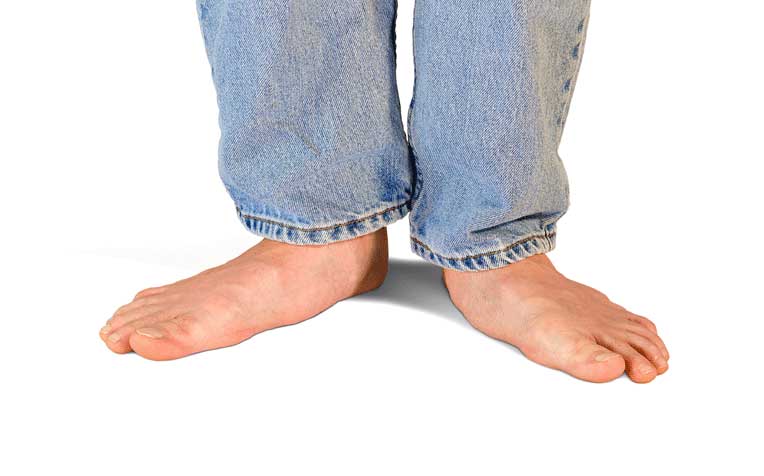
Flat foot / flat feet can affect up to 1 in 5 Asians.
Don't be caught flat-footed (by flat foot / flat feet)
“Do I have flat feet?” is a common question frequently received by Podiatrist Gerard Evans from the Department of Podiatry at Sengkang General Hospital (SKH), a member of the SingHealth group.
For yourself, you too may have come across terms like “flat feet” or “pes planus” (to apply the correct medical terminology). But what does having a flat foot or flat feet mean?
"Typically, a person with a normal foot possesses an arch of the foot that is usually raised off the ground during standing. If this foot arch is low or inexistent, the person is said to have 'flat feet' or sometimes, 'fallen arches'," explains Gerard Evans.
Flat foot / flat feet (pes planus) tends to be a very common condition in the Asian population with estimates suggesting that it occurs in around 1 in 5 individuals.
How do I know I have flat feet?
Flat feet can only be truly identified while the individual is standing or walking. When someone with flat feet stands or walks, their inner foot or arch flattens. In addition the foot may roll over to the inner side (this is known as excessive subtalar pronation).
Typically, the arches of children may not fully develop until the age of 10, therefore it can be difficult to assess whether they have a flat foot until this age.
Why do I have flat feet?
It is often difficult to give a definitive answer to this question as there are a number of contributing factors.
Often there are hereditary factors involved which may contribute to having certain weak/ tight muscles or ligament laxity.
Also, poor footwear can play a major part in developing flat feet. For example, shoes that limit toe movement, such as high heels, can lead to flat feet in adulthood.
If I have flat feet, will I experience pain?
Contrary to popular belief, having a flat foot does not necessarily increase the incidence of injury and it does not usually cause problems.
However, flat feet can put a strain on your muscles, ligaments and joints, which may cause pain in your feet, legs, hips and back when you stand or walk. Furthermore, individuals with flat feet may develop tired or aching feet after prolonged periods of standing or walking.
When will I need treatment?
Treatment is only required if the flat foot is associated with pain in the foot or lower limb. If there isn’t any pain, treatment is not indicated simply as a result of having a flat foot.
However, in severe cases, treatment may be warranted in order to prevent any possible future injuries.
What treatments are available for flat foot / flat feet?
Like all health-related issues, it is important to recognise the problem as early as possible since its severity tends to worsen with time. Early treatments tend to be less invasive and are often associated with better outcomes than treatment at more advanced stages.
It is important to remember that there is no blanket treatment. Treatment would focus on specific aspects or parts of the foot that require modification or healing. This may be achieved in a number of ways. Often the first line of treatment is non-surgical.
Specific exercises such as calf stretching exercises, can be used in order to stretch and lengthen the Achilles tendon and posterior calf muscles, which can be involved in the development of a flat foot.
Insoles or orthotics may be used to correct the flat foot deformity or realign the foot and lower limbs. Your podiatrist or doctor can provide further details on appropriate Insoles or orthotics.
Surgery is usually only considered when the patient fails to respond to conservative measures (such as those above). Depending on the patient’s specific condition, possible surgical procedures may involve:
- Lengthening of the Achilles tendon
- Calcaneal osteotomy (surgical shifting of the heel bone), which may help to re-align the rearfoot
- Reconstruction of specific tendons, such as the tibialis posterior tendon
Ref: S13
Check out other articles on foot conditions:
Guide to Treating Ankle Sprains
Heel Pain (Plantar Fasciitis): Treatment and Remedies
Contributed by














 Get it on Google Play
Get it on Google Play